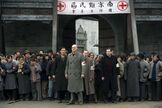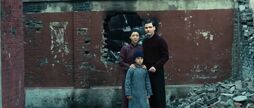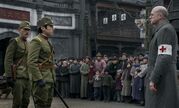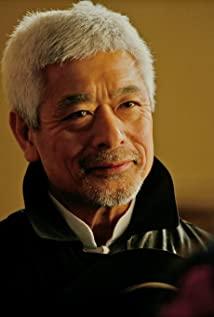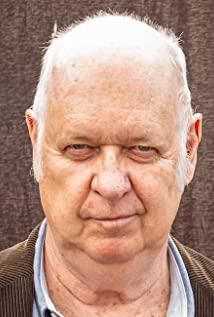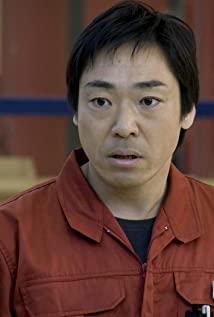On October 9, 1996, a parcel marked "Rabe's materials on the Nanjing War" was sent from Berlin, Germany to the Memorial Hall of the Victims of the Nanjing Massacre by Japanese Invaders. The recipient was me, as the curator. I was puzzled at the time, and even had doubts about its authenticity because although the name Johann Rabe appeared many times in the materials collected, collected, and exhibited at the memorial, in May 1938, Rabe did work in Germany. He was persecuted by the Nazi Party when he gave a speech on the Nanjing Massacre. He declined to testify at the International Military Tribunal for the Far East in Tokyo on the grounds of inconvenience. His whereabouts have been unknown since then. Whether he left information such as text or photos has always been a mystery.
After 58 years of searching for this precious historical item that can provide strong evidence for the history of the Nanjing Massacre, how did it come directly to the museum from Germany?
It turned out that, in August 1995, Chinese-American female writer Zhang Chunru made a special trip to the museum for an interview on the Nanjing Massacre. I entrusted her to collect information on foreign witnesses from the United States, Britain, and Germany who stayed in Nanjing that year. Mr. Rabe. Through the network of the German Teachers' Association, Zhang Chunru visited Mrs. Reinhardt, the granddaughter of Rabe, who had worked as an English teacher in a middle school in Berlin, in 1996. Only then did she know that Rabe had died in Berlin in 1950, but fortunately, " Rabe's Diary" remained intact in the hands of his children. After Zhang Chunru's persuasion, Mrs. Reinhardt personally sent me a copy of the 87-page "Report of Rabe to Hitler".
On December 12, 1996, the New York Federation for Commemorating the Victims of the Nanjing Massacre invited Mrs. Reinhardt to visit the United States to hold a press conference and published Rabe's diary on the Nanjing Massacre for the first time, which attracted worldwide attention. People's Daily and other media quickly reported the news. I was asked to write articles such as "John Rabe's Story," "Iron Evidence of the Japanese Army Massacre," "Precious Historical Testimony," etc., which were published in People's Daily. Rabe and "Rabe's Diary" suddenly became household names in China. hot topic.Rabe came to China in 1908 and returned to Berlin in April 1938. When the Nanjing Massacre occurred, he was the representative of Siemens in Nanjing. Due to his special status as a German, he was elected as the chairman of the Nanjing International Safety Zone Committee, presided over the protection of the 3.86-square-kilometer safety zone, and protected 250,000 Chinese refugees at most. At that time, Rabe ran around the place where the atrocities occurred day and night to prevent the Japanese army from committing atrocities. He also wrote a detailed report on the atrocities of the Japanese army every day, negotiated with the Japanese embassy and protested, and recorded more than 500 cases in his diary. The massacre recorded in detail the heinous crimes committed by the Japanese army against the unarmed Chinese soldiers and civilians after the capture of Nanjing. As a diary written by a German citizen of Japan's ally, its authenticity is beyond doubt.
Rabe's relatives and diaries were found in Germany, and the people of Nanjing started a series of activities to remember Rabe.
On January 5, 1997, with the help of the Chinese Embassy in Germany, the embassy officially accepted the "Rabe Tombstone" donated by Rabe's relatives. In April of the same year, Jiangsu Education Publishing House and Jiangsu People's Publishing House sent people to Berlin to contact and purchase the Chinese copyright of "Rabe's Diary", and then compiled and published "Rabe's Diary" in Nanjing, which aroused unprecedented resonance and harmony among readers. It was well received, and the German, English, and Japanese versions of Rabe's Diary were successively published, which attracted worldwide attention.
In September of the same year, we held the "Mr. Rabe Documentary Exhibition" and specially invited Mrs. Reinhardt and her husband to Nanjing to participate. Mrs. Reinhardt personally reproduced the full set of "Rabe's Diary", as well as 80 photos of the Nanjing Massacre that were taken by American John Magee and German Cruz on the spot, and the time, place, and content were marked by Rabe's hand. The historical photos were handed to me. I accompanied the Reinhardt couple to visit Rabe's former residence in Nanjing. She recognized it immediately and recalled that when she was 6 years old in 1937, she used to look at the city wall of Nanjing from the small window upstairs, only because of the Japanese invasion of China. She and her grandmother, Dora, left Nanjing, and she is also a witness to that period of history. We went to the Siemens Nanjing branch together to unveil the bronze statue of Mr. Rabe. This is the first visit to China by Rabe's relatives after the war. They were very excited about this trip to China and believed that the Chinese people had not forgotten Rabe.
On December 6, 1998, when I visited Germany, Reinhardt and his wife braved the heavy snow to greet us at the Berlin airport and then took us straight to the Rabe cemetery. There, we respectfully bowed and laid flowers for Mr. Rabe. At Reinhardt's house, we accepted three wooden boxes donated by her. It is said that Rabe used to pack his luggage from Nanjing. The "Rabe Diary" was stored in these wooden boxes and brought back to Germany.
After that, Rabe's relatives and Nanjing seemed to build a bridge. They visited Nanjing many times, and the memorial hall often communicated with Rabe's relatives. Now, the three wooden boxes, the letterhead used by Mr. Rabe in Nanjing, the copper cigar sleeves, the banners given to Rabe by refugees, and other cultural relics are displayed to the public in the historical materials exhibition hall of the museum, attracting more than 5 million viewers every year. Walking past the display board with the incisive words "Can be forgiven, but not forgotten", the selected excerpts from "Rabe's Diary" were also made into display boards in Chinese, English, and Japanese, which were presented to people. On December 1, 2006, Rabe's former residence was renovated and turned into the Rabe Memorial Hall and officially opened to the public. Nanjing also plans to fund Rabe's relatives to build a Rabe memorial in Rabe's hometown of Hamburg, Germany, so that Rabe's spirit will live on in the world.
In August 2005, I was invited to be interviewed on "Rabe's Diary" at the Beijing Office of German TV 2. At that time, North Deutsche TV in Germany was broadcasting their documentary "Nanjing 1937" based on "Rabe's Diary". During interviews, they told me that German TV 2 planned to make a film on this subject, and told me that the filming process would last 3 to 5 years. 5 years later, the film finally came out. I firmly believe that this historical blockbuster, which is carefully filmed by actors from China, Germany, the United States, the United Kingdom, Japan, and other countries, will let more people know Rabe, understand Rabe, and remember Rabe!
View more about John Rabe reviews



